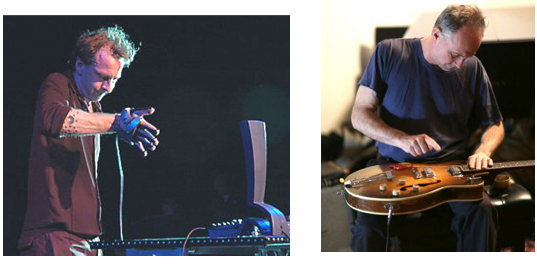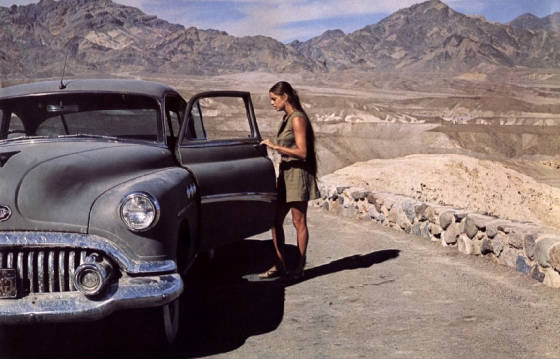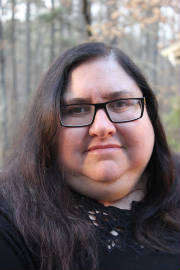|

|
| Matthew Ostrowski and David Watson |
A Conversation With David Watson and
Matthew Ostrowski By
Deanna Sirlin
Last fall, I attended a opening
at a fellow artist’s open studio
in New York’s Chinatown. It was a good opening with lots of artwork and people
really looking at the work. I heard there was going to be a performance, and
some kind of magic occurred when David Watson and Matthew Ostrowski got up to
play their piece, Zabriskie Point: There and Back in 22 Minutes. We stood there
at attention for all twenty-two
minutes—no talking, no rustling --listening to this music played with on the
guitar using tools and objects, and an electronic hand controlling a computer. We
were transfixed.
I wish I could recreate for
you the exact experience of this
performance in that studio. However, I am delighted to present an excerpt from the work and a
conversation with its makers.
To hear an excerpt from Zabriskie Point: There and Back in 22 Minutes, please click on this player:
Deanna Sirlin: You were
performing as a duo in James Sienna’s little gallery Sometimes (works of art). How did that come about?
David Watson: Peter Scott asked me to do a live event for the art show he was doing there, Pardon Our
Disappearance. He was working with the kind of Utopian fantasy images that real estate developers use in our neighborhood
(Greenpoint /Williamsburg in Brooklyn, New York) to boost their developments. Especially awnings. And I had to come up with
a concept very fast (the printer was waiting). Instinctively I just said "Zabriskie Point: There and Back in 22 minutes."
That became the concept and the composition. I asked Matthew to join me as we have worked together often in the past -- he
has done a lot of work with manipulating media over the years, and turning a narrative movie into a sound piece would be right
up his alley.
The film juxtaposes the machinations of a group of developers in the processing of creating a plastic-Utopian
real estate development with a band of hippies searching for some kind of inchoate revolution, all against the backdrop of
Californian wilderness and sprawl. I hadn't seen the movie in 30 years, and when I watched I was pleasantly surprised
to see how it dealt with the counter culture - from the inside - in a really nuanced way. Observing, neither criticizing nor
praising. (The Occupy movement in New York was just re-emerging at its one-year anniversary mark when we did this piece.)
These two dreams, one of a perfectly controlled bourgeois environment, the other of some kind of post-capitalist liberation,
are still very much with us -- visible in Peter's work as much as it was forty years ago when Zabriskie Point was made.

|
| Scenes from Antonioni's Zabriskie Point |
DS: But you didn't show the movie?
DW: No,
we didn't show the movie.

|
| Scenes from Antonioni's Zabriskie Point |
DS: In performing the piece, you are obviously controlling your material with some kind of prosthetic hand, a glove.
How does this work, and why do you do this?
Matthew Ostrowski: First of all, it's not a prosthetic -- my own hand works perfectly. It's a glove, which uses infrared light and various
sensors to detect the position of my hand and the bending of my fingers. That data is sent to my computer, which I then use
to control several different musical algorithms in various ways, and this constitutes my “instrument.”
The
glove is the most recent iteration of my attempts over the years to develop a performance system for a computer that is capable
of true musical expression. The computer as a performance device has two main drawbacks. First, it's simply boring to
watch someone sit behind a laptop while music is coming out of it. Second, and more important, is that the computer doesn't
really offer any way of interfacing with it that has the flexibility or gestural capacities of a musical instrument. With
a keyboard and mouse, you can only control only one or two musical parameters at a time, whereas with a more sophisticated
interface, single physical gestures can control a variety of parameters simultaneously. This kind of system allows for
a much more spontaneous form of playing -- one can relate specific movements to specific sonic gestalts, much as one does
with a traditional musical instrument.
Computers are designed to break things down into their constituent
parts, and music software inevitably follows this model as well. My glove is a strategy for reintegrating those parts into
wholes that directly relate to my body as I perform. This physical connection not only brings myself as a musician into more
direct contact with my sound, but also provides the audience with a clear visual relationship between corporal action and
sonic event, which I believe establishes a stronger bond between myself and my listeners than sitting behind a laptop and
staring at a screen.

|
| Daria Halprin in Antonioni's Zabriskie Point |
Originally from New
Zealand, David Watson lives and works in New York City. An internationally respected guitarist and improviser, Watson's more
recent work uses the highland bagpipes. His work on the pipes subverts any conventional expectation, drawing on traditional
sources, electronica and experimental improv "to blow the bagpipes into the 21st century." A New York City native, Matthew Ostrowski is a composer,
performer and
installation artist, exploring work with multimedia, alternative
controllers, video and theater. Using digital tools and formalist
techniques to engage with quotidian materials -- sonic, physical, and
cultural – Ostrowski's work explores the liminal space between the
virtual and phenomenological worlds. He studied at the Oberlin
Conservatory and the Institute of Sonology in The Hague. An active
musical performer, he regularly plays in the musical duo KRK, with
contrabassist George Cremaschi, and the multimedia ensemble Fair Use.

Deanna Sirlin is Editor-in Chief of The Art Section. Her forthcoming book,
She's Got What It Takes: Contemporary American Women Artists in Dialogue, will be out in the fall of 2013, published
by Charta Art Books, Milan. She is also an artist.
|
